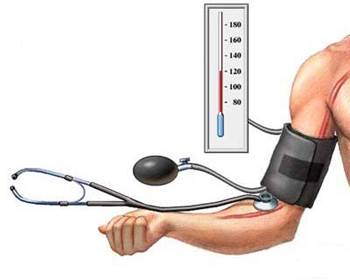 Optimal blood pressure (BP) to be maintained is not very clear in patients with chronic kidney disease (CKD), which is often associated with high pulse pressure. The investigators under lead investigator George Bakris MD examined BPs and outcomes in 651,749 U.S. veterans with non–dialysis-dependent CKD (mean age, 74; 88% white; 9% black) treated at Veterans Affairs healthcare facilities from October 2004 through September 2006. At baseline, 43% of participants had diabetes, and mean glomerular filtration rate was 50.4 mL per minute; mean baseline systolic BP (SBP) and diastolic BP (DBP) were 135 mm Hg and 72 mm Hg, respectively. Optimal blood pressure (BP) to be maintained is not very clear in patients with chronic kidney disease (CKD), which is often associated with high pulse pressure. The investigators under lead investigator George Bakris MD examined BPs and outcomes in 651,749 U.S. veterans with non–dialysis-dependent CKD (mean age, 74; 88% white; 9% black) treated at Veterans Affairs healthcare facilities from October 2004 through September 2006. At baseline, 43% of participants had diabetes, and mean glomerular filtration rate was 50.4 mL per minute; mean baseline systolic BP (SBP) and diastolic BP (DBP) were 135 mm Hg and 72 mm Hg, respectively.
 During a median follow-up of 5.8 years, 238,640 patients died. The associations of both SBP and DBP with mortality were U-shaped. Optimal SBP was in the approximate range of 140–160 mm Hg, and optimal DBP was in the approximate range of 80–90 mm Hg. Mortality was lowest in patients with an SBP in the 140–159 mm Hg range or a DBP in the 90–99 mm Hg range and was highest in those with an SBP less than 120 mm Hg and a DBP less than 80 mm Hg; these associations were statistically significant and independent of confounding variables. In adjusted analyses of 96 mutually exclusive combinations of SBP and DBP categories, hazard ratios for mortality were lowest at BPs of 130–159/70–89 mm Hg. Mortality was significantly elevated in all categories in which DBP was less than 70 mm Hg. During a median follow-up of 5.8 years, 238,640 patients died. The associations of both SBP and DBP with mortality were U-shaped. Optimal SBP was in the approximate range of 140–160 mm Hg, and optimal DBP was in the approximate range of 80–90 mm Hg. Mortality was lowest in patients with an SBP in the 140–159 mm Hg range or a DBP in the 90–99 mm Hg range and was highest in those with an SBP less than 120 mm Hg and a DBP less than 80 mm Hg; these associations were statistically significant and independent of confounding variables. In adjusted analyses of 96 mutually exclusive combinations of SBP and DBP categories, hazard ratios for mortality were lowest at BPs of 130–159/70–89 mm Hg. Mortality was significantly elevated in all categories in which DBP was less than 70 mm Hg.
|
 |

